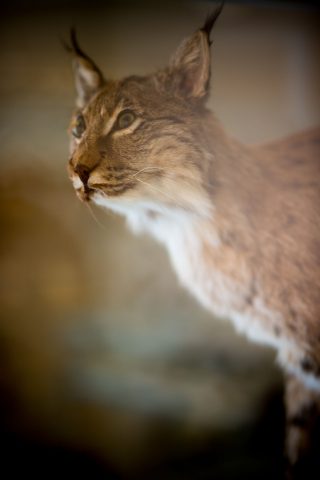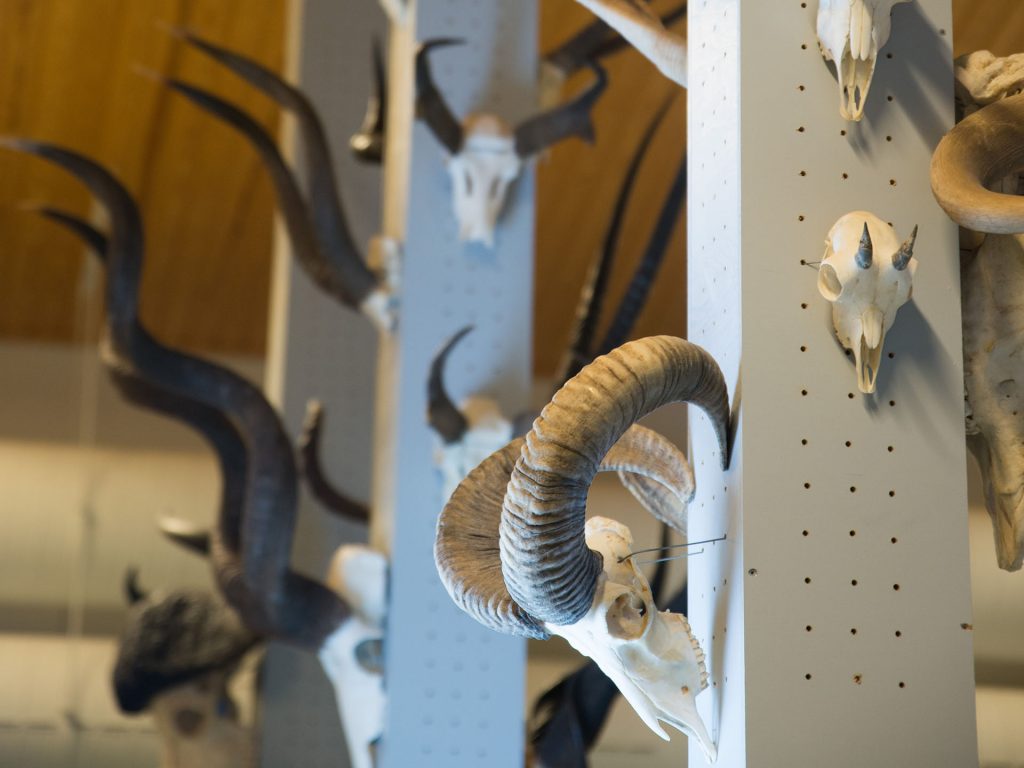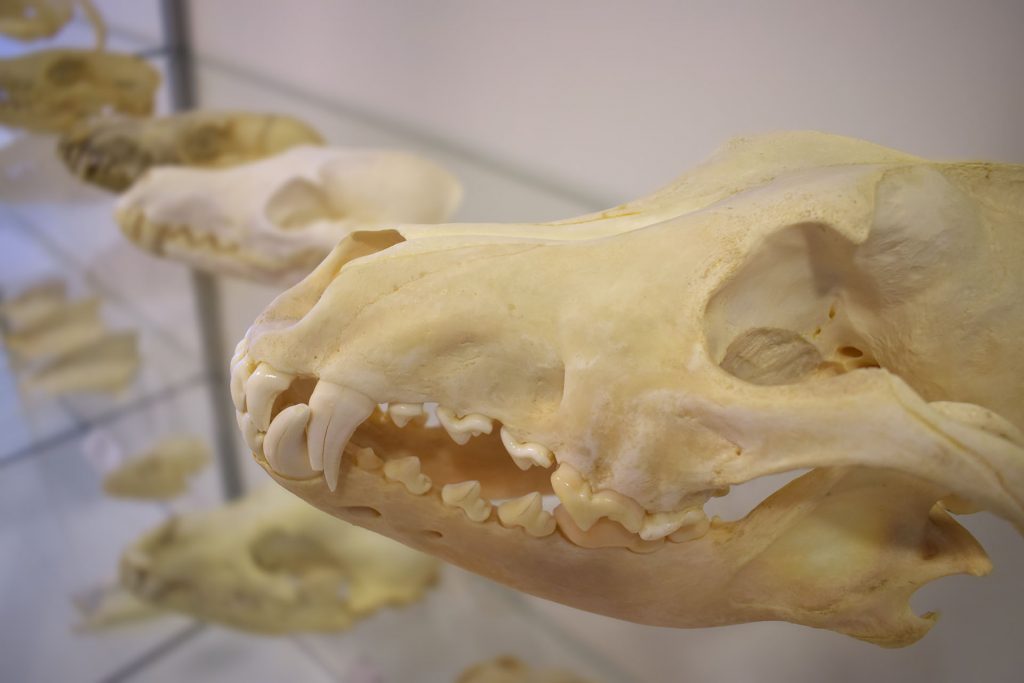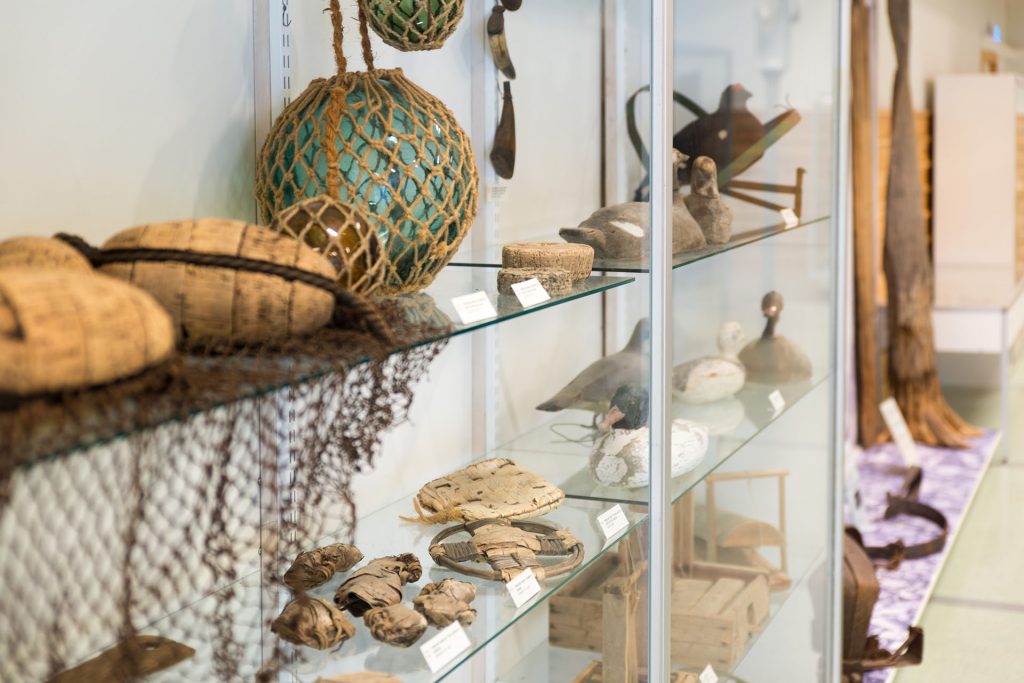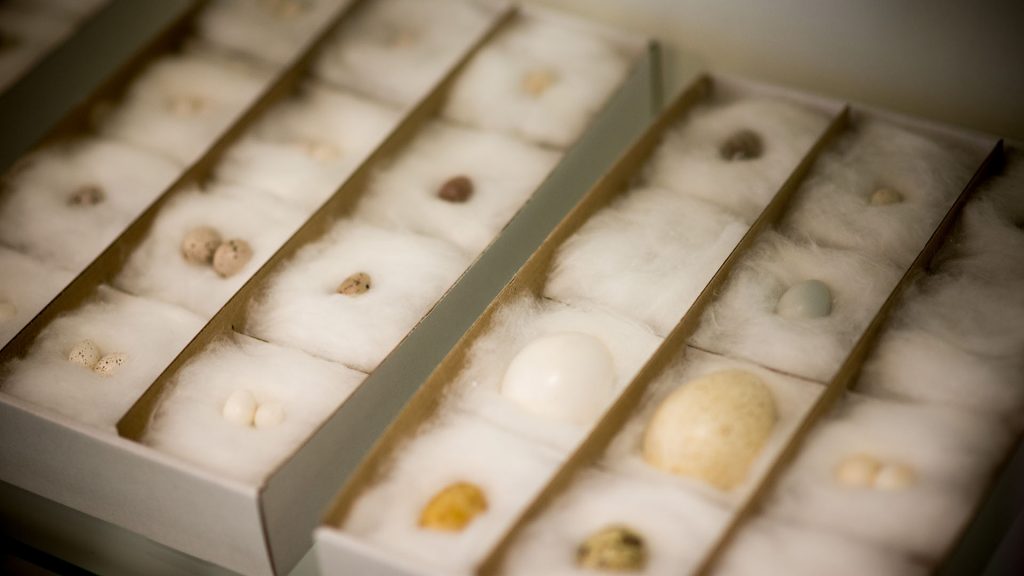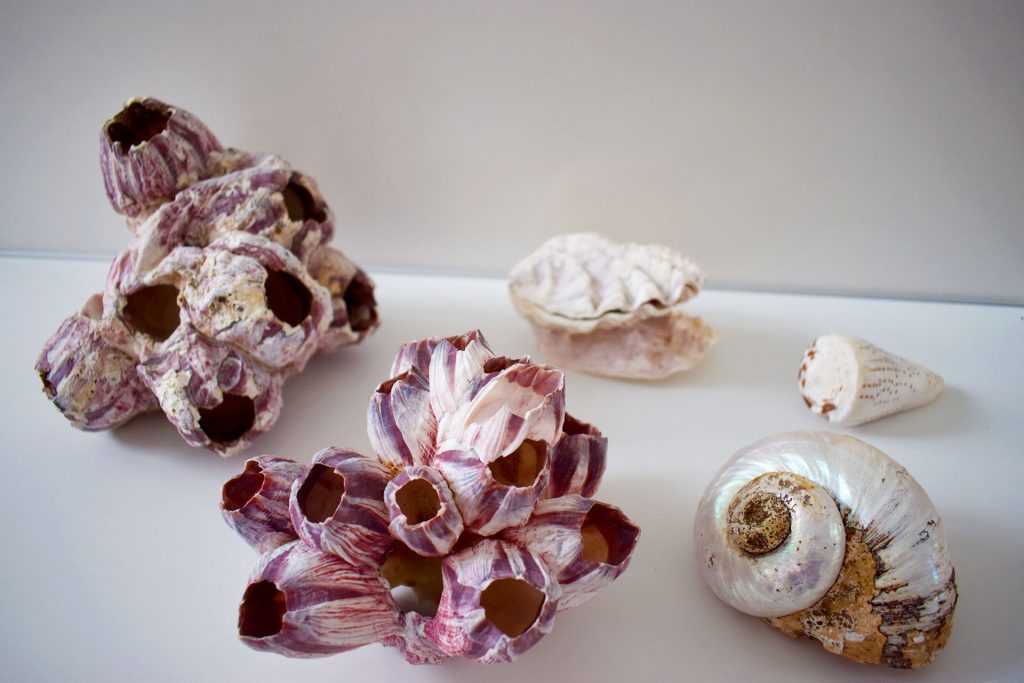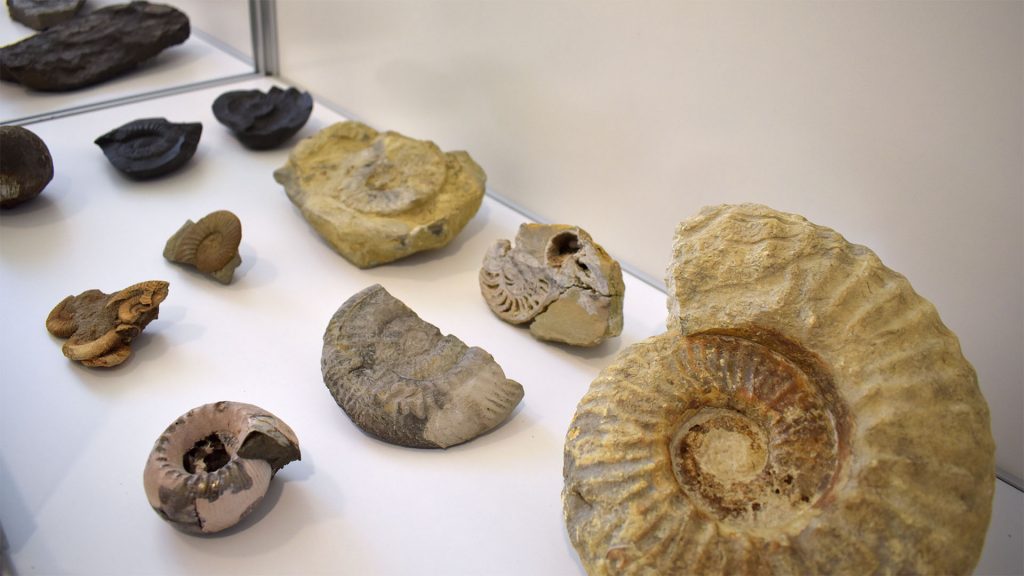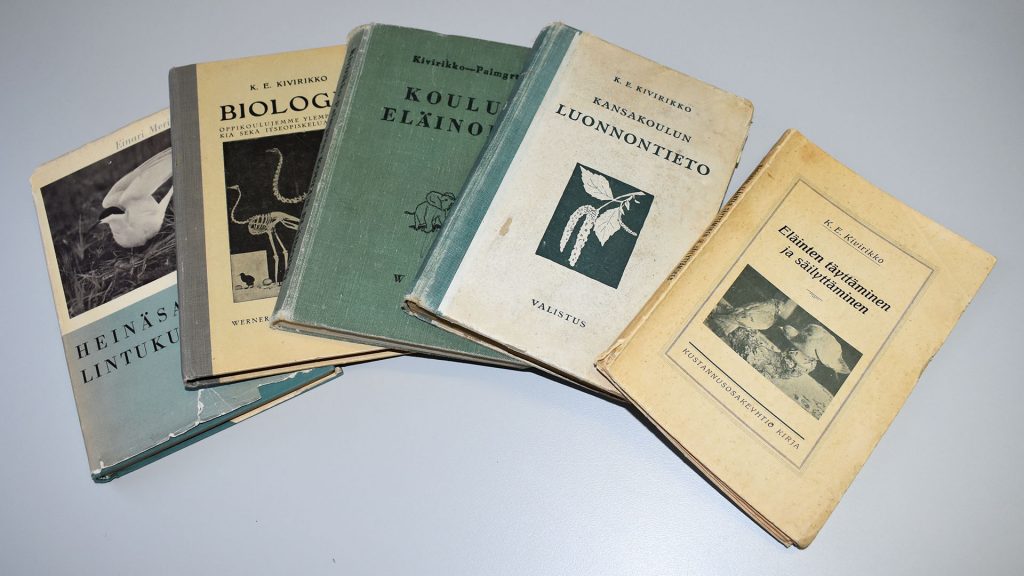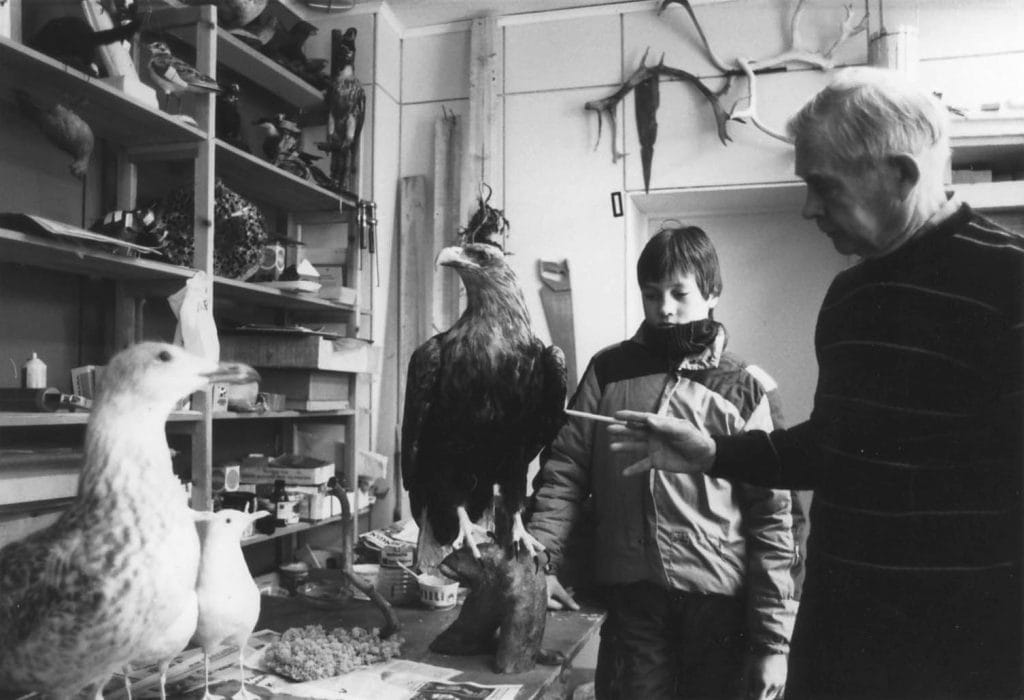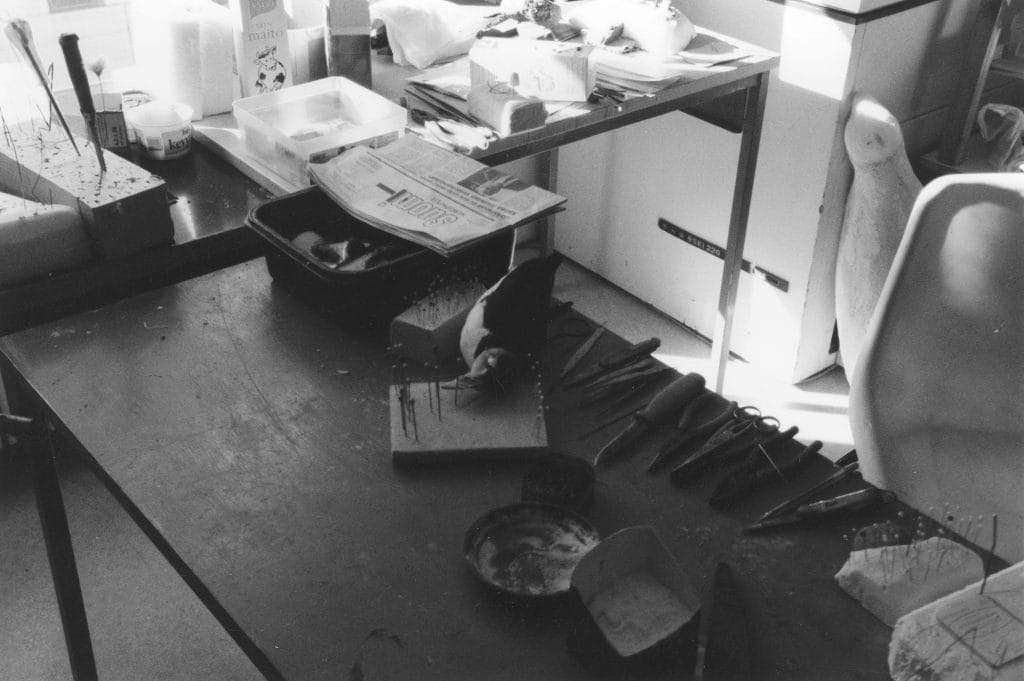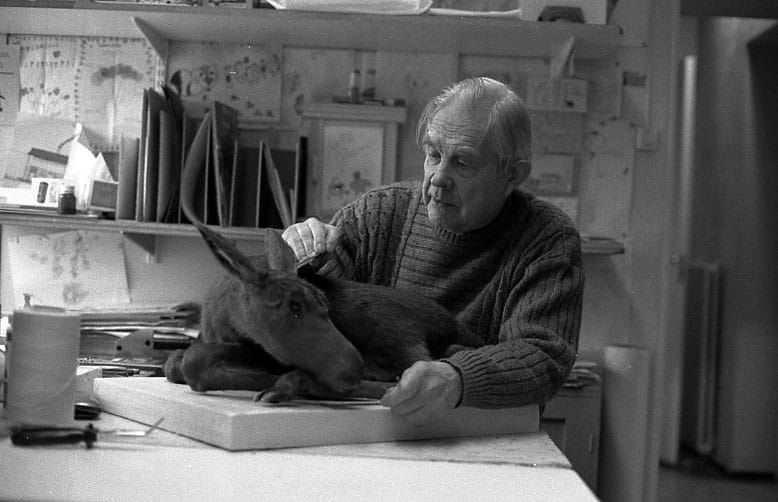Veikko Salkio´s (1912–2006) Natural History Collection is a nationally valuable natural science collection. The cohesive collection entity is the result of Veikko Salkio’s life’s work and consists of the following categories: Finnish mammals and birds, horns, skulls and bones, traditional hunting culture, fossils, foreign specimens, as well as literature and the archive. Veikko Salkio used to build small huts out of turf and wood in the Lappish nature, calling them Kieppi huts. In Finnish, Kieppi is also a small hole in snow that galliform bird species overnight in.
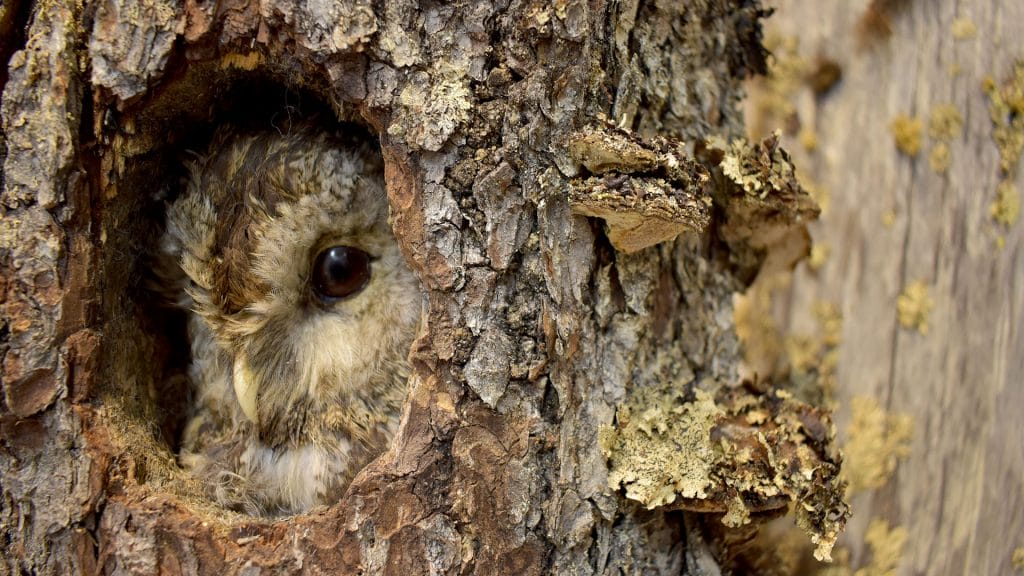
Natural History Collection
Veikko Salkio
Even as a child, Veikko Salkio (1912–2006) was very interested in nature. “I’ve been fascinated by all animals as long as I can remember, just like any other child. The only difference is that I have stayed on a child’s level even to this day. When I also happen to have an innate primitive instinct to collect, the result can be seen in these glass cabinets.“
Veikko Salkio had worked as a ranger on nature reserves, and the purpose of his life’s work was to promote nature conservation and environmental education. Taxidermy was his lifelong hobby that resulted in three collections. The first one had to be left in Petsamo, the second one in Rovaniemi and the third and last one was opened to public in Kokkola in 1982.
Veikko Salkio found the art of taxidermy fascinating. Each new species was a challenge. Some parts of the work were especially challenging, such as pulling the scalp to the sheath. Seija Jakobsson, one of Veikko’s pupils, told that Veikko once stated, after a successful job: “Sailing became considerably easier when we’d once sailed around Cape Horn.” After this, the most fascinating part of the taxidermy work began: fine-tuning the specimen.
Veikko Salkio’s fossil collection started to grow significantly in the early 1980s due to his excursions to Svalbard. In 1982 he wrote: “We returned to our campsite with our backpacks filled with our findings. The most interesting findings were the leaf imprints of hardwood species that existed some twenty million years ago, where even the smallest petioles could be made out in the stone.“
After the mid-1980s, the collection grew again with fossil specimens, horns and skulls from all around the world, when Finnish-Canadian Ray Rinta (1925–2011) started helping Veikko with the collection. Opening the packages from Ray was always a big occasion. Veikko visited Ray and his family a few times, and Ray drove him widely across Canada and the U.S. in his caravan to visit, for example, different fossil sites.
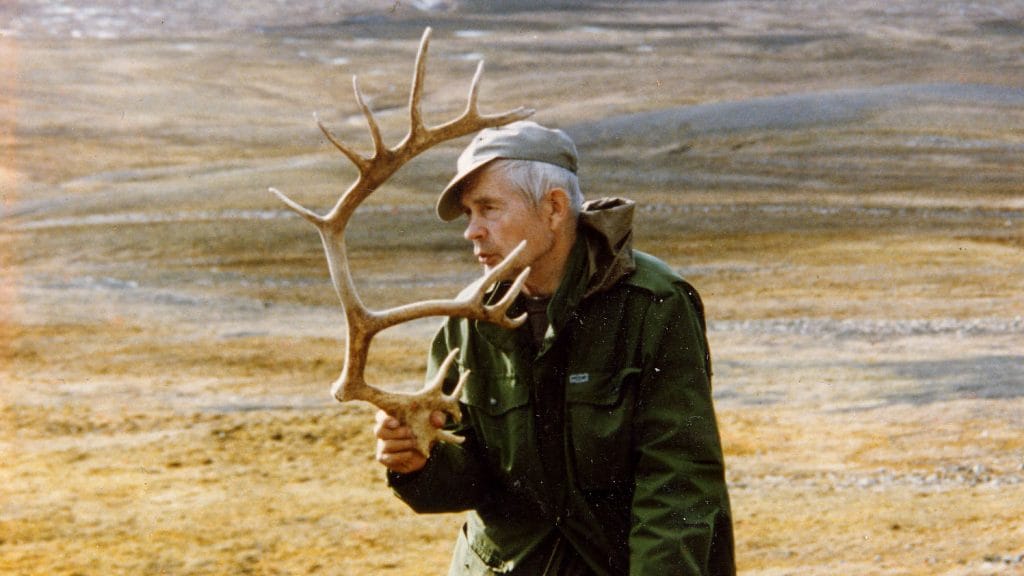
Veikko’s workroom
Veikko Salkio stuffed his first bird, a Eurasian woodcock, in Imatra when he was fifteen years old. He learned his skills from a guidebook by K. E. Kivirikko on the stuffing and preserving of animals (Eläinten täyttäminen ja säilyttäminen, Helsinki 1924).
In 1966, he got a licence to collect accidentally deceased protected species, provided that in time they would be placed in a museum. It was important to Veikko that no animal would be slain for his collection. He wanted his collection to be available to everyone interested in nature and animals. The future generations would also have the chance to see the diversity of nature.
Observing the shapes of nature inspired him. Veikko used his passion to plan and execute mini dioramas of nature. With the subtlety of an artist and the vision of a natural scientist, he set the birds and mammals in positions and environments which were as natural as possible for each species.
Salkio founded the natural museum in Kokkola in 1982. The museum became a meeting place for people who are interested in nature, and an important destination for schoolchildren in Kokkola. Thanks to the local people, his collection grew very quickly. He was brought more specimens than he could handle – his hobby was turning into a profession.
The natural museum became the centre of Salkio’s life until his death. He enjoyed giving people advice on stuffing animals and telling them about nature. Many children sat in Veikko’s workroom and observed his work. The eldest got to participate in the actual work, by helping him sow or adjusting the bases. Veikko’s peaceful presence created a safe and stress-free atmosphere. Breaks were important, and a moment’s rest was always refreshing.
